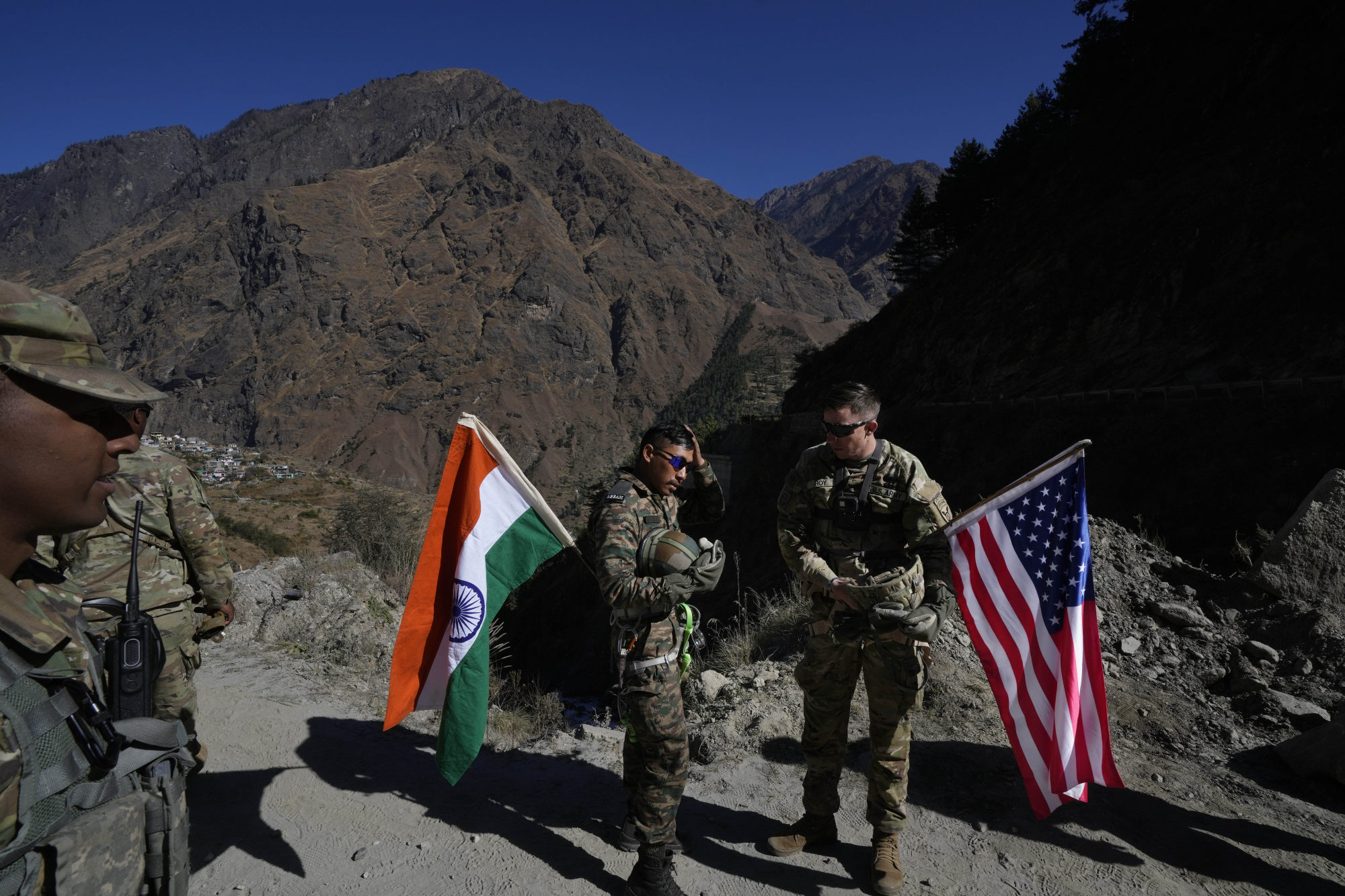
Where US sees India as an Indo-Pacific security provider, Pakistan sees an arms race
- Giving India weapons and military tech under the US Indo-Pacific strategy destabilises South Asia’s strategic calculus, leaving Pakistan to find ways to rebalance its security
- This could mean Pakistan increasing its nuclear-powered submarines, hypersonic missiles and nuclear fissile material
But Western geopolitical strategies do not occur in a vacuum; because the Indo-Pacific strategy also reflects increasing US bonhomie with India, it ties directly into South Asia’s complex security landscape.
The region’s security environment is already marked by military asymmetries, with India far ahead of any other state. The US strategy further envisions India as a dominant strategic power in the Indian Ocean against China. Recently, Washington delivered six MH-60R military helicopters to the Indian navy to boost its anti-submarine capabilities.
Meanwhile, US-India military exercises continue, such as the Tiger Triumph and Yudh Abhyas, to train the Indian military for future operating environments and increase synchronisation between both armies.

Russia is also adding to the imbalance by arming India, despite New Delhi signing defence agreements with the US. This includes helping India develop nuclear-powered ballistic missile submarines (also known as SSBNs) and providing lightweight torpedoes. INS Chakra, a Russian-class submarine, was commissioned into service in India in 2012.
Because of its unique strategic position at the intersection of competing powers, India can build its military power – drastically altering the regional balance of power vis-à-vis Pakistan – with seemingly little international accountability.
But these developments do not go unnoticed by regional states; they force Pakistan in particular to defend its security. Historically, Pakistan has handled destabilising factors with caution. Islamabad believes in the power of diplomacy and confidence-building measures.
In 2019, Pakistan adopted a maritime doctrine to modernise its navy and acquire modern weapons to secure its maritime interests. It also initiated regional maritime security patrols to safeguard against Indian and other threats. Pakistan’s navy now patrols the Gulf of Oman, Arabian Sea and Gulf of Aden.
The navy has also commissioned Chinese-made 054A frigates under a 2018 agreement between the two countries. These advanced warships, armed with modern detection and weapon systems, are one of the largest and most advanced in the Pakistan navy, which also carries Turkish Milgem-class corvettes and a modernised Agosta 90B submarine.
But such efforts to restore balance pale in comparison to the quantum pace of India’s militarisation, accelerated dramatically by Washington. Pakistan needs to do more to build its defence capabilities.
Establishing peace and stability requires mutual effort. It is the responsibility of each regional member to not only subscribe to the notion of coexistence but also make a conscious effort to achieve this goal collectively. The Indo-Pacific strategy, as it stands, affects South Asia’s strategic calculus, especially in feeding India’s hegemonic intentions.
What does Pakistan’s national security policy say about India, China, US?
There are a few ways in which Pakistan may seek to restore the strategic balance.
First, it can build an assured second-strike capability based on SSBNs and SSNs, which stands for submersible ships nuclear, essentially nuclear-powered attack submarines. This may take decades but is a worthy pursuit to build strategic stability in the Indian Ocean. As an initial step, Pakistan can get Chinese SSNs on lease and build small modular reactors that could fit into its indigenous submarines.
Third, Pakistan can continue to build its fissile material stocks to match India’s nuclear proliferation as it makes warheads to complete its “nuclear triad” – the ability to launch nuclear strikes by land, air and sea.
Fourth, it can urge India to take the next logical step beyond the unilateral moratorium on nuclear testing it has declared. Pakistan has reportedly offered to translate its own nuclear test ban into a bilateral non-testing arrangement with India. Until that happens, Pakistan should never tie its hands by signing the UN Comprehensive Nuclear Test Ban Treaty.
As India arms itself with international support and disturbs the fragile balance of power in South Asia, Pakistan is left with no choice but to preserve its maritime interests, by optimising its military and technological capability against India’s asymmetrically expanding naval prowess.
Pushing a key regional state into a corner has never achieved a win-win outcome historically, and neither will it ever be a suitable bargain.
Murad Ali is a research officer at the Center for International Strategic Studies, Islamabad, Pakistan

.jpg?itok=DIQYUzZK&v=1671682725)

